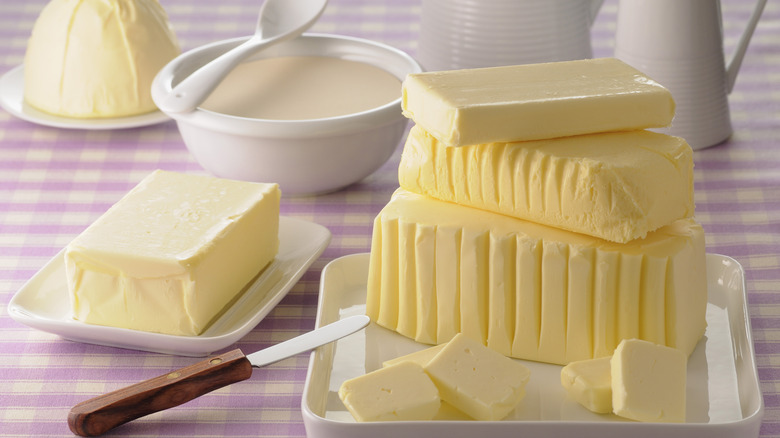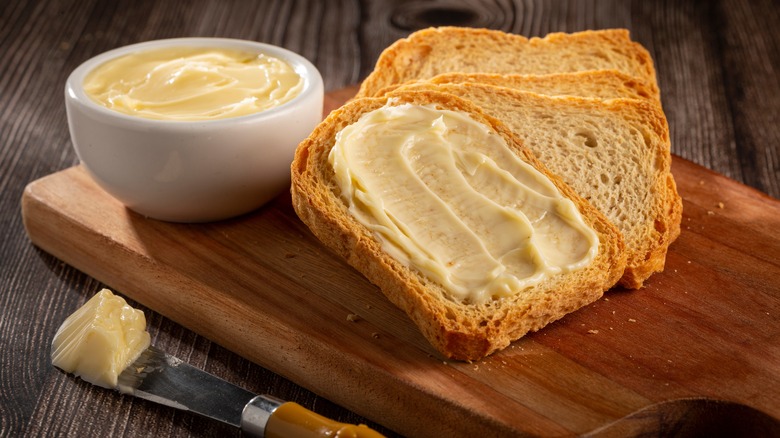The Bougie Ingredient Ina Garten Tops Her Toast With
Over her nearly 50 years of working in the food industry, Ina Garten has developed hundreds of recipes for elaborate meals of all kinds, but when it comes to her own breakfast, she prefers to keep things simple. For the Barefoot Contessa, the best way to start the day is either with the breakfast she has eaten for over a decade (oatmeal) or a piece of toast.
While this may seem like a surprisingly ordinary option for someone so skilled in the kitchen, Garten makes use of one key ingredient to elevate this breakfast staple from bland to bougie: French butter with sea salt. With the crunch of the toasted bread and the creaminess of the dairy spread, as well as a perfect balance of savory and salty, this dish offers a delightful contrast of both textures and flavors in just a matter of minutes. Since she spends so much time cooking, it's no wonder Garten chooses to make things easy on herself first thing in the morning with a two-ingredient meal. And she isn't alone when it comes to touting the merits of her favorite topping for toast — fellow celebrity chef Nancy Silverton always keeps French butter in her fridge, too.
What makes French butter better?
Ina Garten's ideal breakfast relies on the use of salted French butter, which comes at a premium. If you have ever considered buying it, but have been deterred by the cost, you may have wondered if it's really worth it. The numbers on the price tag reflect both the artisanal quality of the butter and the effort of transporting it overseas.
On either side of the Atlantic butter is, at its base, a product made up of butterfat, water, and milk solids. The main difference between American and French butter is the quantity of the first ingredient: In the U.S., butter must contain at least 80% fat — while in the E.U. butter is composed of 82-90% butterfat. As a result of the higher fat content, French butter has a richer flavor.
It is not just the type of dairy or the way it is processed that makes Garten's favorite butter special — its unique taste also comes from its saltiness, which is the result of another particular French tradition. This butter is made with fleur de sel from Ile de Re, a carefully hand-harvested sea salt from a small island off of France's west coast. Given the more intensely salty flavor and the higher price point, this butter should be used sparingly and in ways that allow it to shine, as it does on toast.
Tips for French-inspired toasts
If you want to fashion your own breakfast after Ina Garten's, but you're craving something a little more hearty than just a piece of toast, you can take inspiration from another French tradition and turn yours into an uncomplicated take on a tartine. For starters, try transforming an iconic jambon beurre into an open-faced sandwich. In skipping the top layer of the baguette, you have a higher butter-to-bread-to-ham ratio so that the dairy remains in the spotlight. As a vegetarian alternative, you may prefer to serve your buttered toast with thin slices of radish for an easy yet refined dish.
French butter is an essential component of Garten's morning meal, but if you don't have any on hand, you can easily turn unsalted butter into the salty variety by softening it and then sprinkling in some salt. For the full experience, Garten also recommends brewing yourself a cup of coffee to serve along with the toast.



